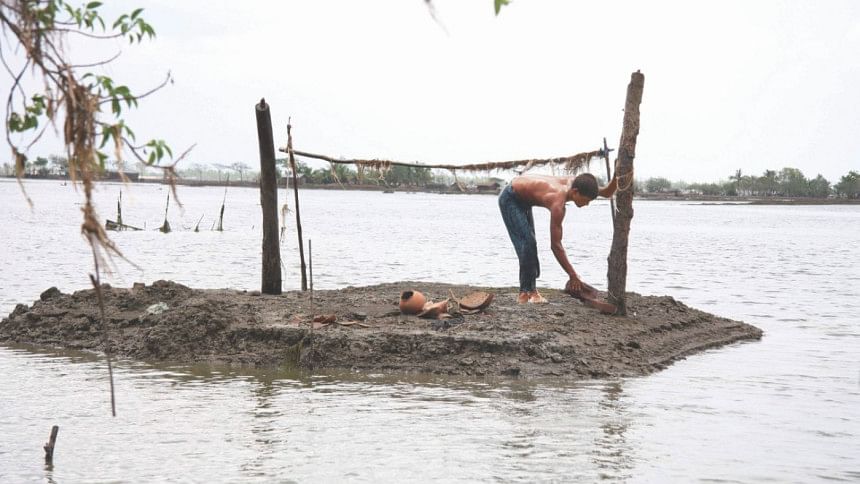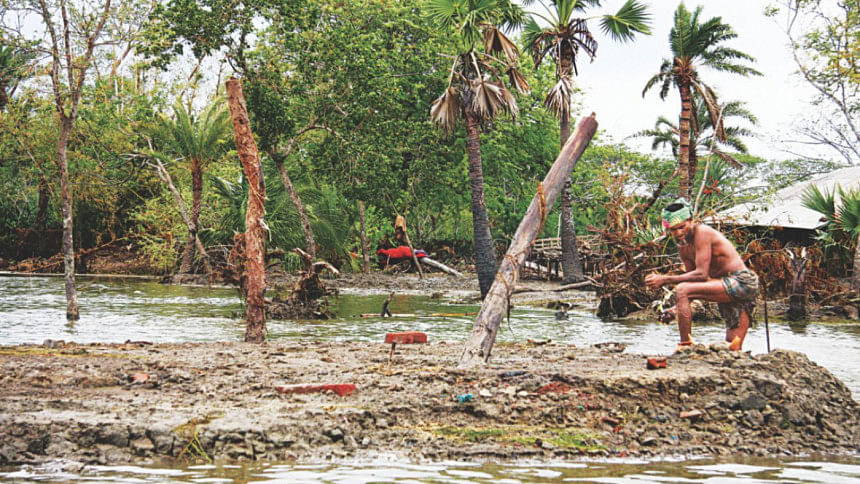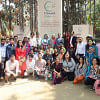AGREEING TO SAVE THE PLANET


The 2015 United Nations Climate Change Conference, COP 21, held in Paris from 30 November to 12 December 2015, was the biggest event of its kind. Never before had so many heads of government or state gathered to reach an agreement to combat climate change. It is a significant step forward, after the bewildering frustration in Copenhagen (COP 15, 2009).
COPs or Conferences of the Parties are held under the United Nations Framework Convention on Climate Change (UNFCCC) or simply the Convention. Originally, the purpose of the Convention was focused on mitigation or reduction of greenhouse gas (GHG) emissions with a view to controlling global warming and climate change risks. The Kyoto Protocol, adopted in COP 3 in 1997, held in Kyoto, Japan was concerned with only GHG emission. Currently, all 195 countries of the world are Parties to the Convention and, therefore, participated in COP 21.
Eventually, COP 13, held in Bali, Indonesia in 2007 adopted a broader framework that included a vision relating to global warming, mitigation, adaptation, finance and technology transfer, and capacity building. It was also agreed in COP 13 that a legally binding agreement to address climate change and its impacts, collectively by all countries and by individual countries, would be formulated and adopted in COP 15 in 2009. But, as mentioned above, COP 15 held in Copenhagen did not produce any agreement. The outcome was the Copenhagen Accord. But, a number of key stipulations related to vision, mitigation, adaptation, finance, and technology transfer, that have found place in the Paris Agreement were stated in the Accord.
Let me briefly discuss some of the key aspects of the Paris Agreement.

Reduce Global Warming
In Copenhagen, at the insistence of Bangladesh and other vulnerable countries, the Copenhagen Accord called for looking at the possibilities to restrict the temperature rise to 1.5°C by the end of the century above the pre-industrial level. After a lot of hard negotiations, even wrangling, it was finally agreed and included in the Paris Agreement that global warming would be restricted to well below 2°C and efforts would be made to limit it to 1.5°C by the end of this century above the pre-industrial level. This shared vision is certainly a major victory for the whole world, particularly for vulnerable countries like Bangladesh.
Restricting Greenhouse Gas (GHG) Emission
The emission of GHGs, the cause of global warming, must be restricted to levels consistent with the global warming vision. But, the intended nationally determined contributions (INDCs) submitted, as agreed, before COP 21 by almost all the countries does not depict a hopeful picture. In fact, an analysis of all INDCs with respect to emission reduction by 2030 shows that even if the proposed reductions are all fully implemented a global warming of at least 2.7°C or even well over 3°C is in prospect. However, the implementation of the Agreement is to be reviewed every five years and it is stated in the Paris Agreement that one of its key purposes is for the Parties to increase their emission ambitions to bring the total global emission in line with the global warming vision (of well below 2°C and possibly 1.5°C). The ultimate outcome will also depend on how the emission reduction regime plays out in the period beyond 2030. Appropriate technology development and deployment is critical in this context. By and large, the state of technology regime remains well below the required levels.
It may be mentioned that, even if the global warming can be restricted to 1.5°C, millions of people will still be affected by climate change, especially in vulnerable countries including Bangladesh. However, it may be possible to minimise the impacts through effective adaptation. If the global warming rises by 2°C or higher, the impacts will be increasingly larger and adaptation more difficult. With global warming of 3°C or more, Planet Earth will face a climatic catastrophe, from which redemption may be extremely intractable.
As for Bangladesh, a least developed and highly climate change vulnerable country, it has little to contribute to the global GHG emission reduction. In fact, the per capita annual emission in Bangladesh is way lower than that of developed countries. Still, Bangladesh has proposed in its INDC that it will unconditionally reduce emissions in three major sectors namely, transport, energy, and industry by 5 percent by 2030 with reference to business as usual (BAU) scenario; and, if financial and technological support is available from the international community, the reduction can be 15 percent. It has also been stated in its INDC that Bangladesh will not cross the average of the developing countries in terms of annual per capita GHG emission. The Bangladesh INDC has also highlighted the importance of adaptation for the country and indicated certain key aspects of its adaptation needs along with financial implications.
Adapting According to Ground Realities
On adaptation, the Paris Agreement contains proposed actions along lines Bangladesh and similar other countries have been asking for. It is acknowledged that adaptation actions would be country-driven, gender-sensitive, participatory, and transparent, with special focus on particularly vulnerable population groups, communities, and ecosystems. Sharing information, good practices, experiences, and lessons learnt; strengthening institutional arrangements; and creating a robust scientific knowledge base will be emphasised. And developing country parties will be assisted in a manner consistent with their respective needs and circumstances and to encourage good practices. It has also been agreed that continuous and enhanced international support for adaptation should be provided to the developing country parties.
What will happen in practice, however, remains to be seen. Moreover, non-committal 'should' has been used instead of assuring 'shall' regarding enhanced financing of adaptation. Yet, the Paris Agreement does provide a basis for future negotiations and development of cooperation frameworks so as to seek appropriate levels of financial and technology transfer for the adaptation actions identified and developed under national adaptation plans (NAPs) to be prepared by the developing country parties.
As for Bangladesh and similar other countries, an adaptation framework is there in the Paris Agreement. It is necessary for the country to prepare its NAP and mobilise required resources to mount its adaptation actions.
Climate Change Induced Displacement
Increasing numbers of people are being displaced as natural disasters are increasing both in frequency and in terms of devastation. It is indeed disappointing that, despite persistent efforts by Bangladeshi negotiators and those of the other concerned countries, this issue could not be included in the main Agreement. It has, however, been mentioned in the CoP Decision part of the Agreement (Para 50) that existing bodies and expert groups under the Convention and relevant organisations and expert bodies outside the Convention would prepare recommendations for integrated approaches to advert, minimise, and address displacement due to the impacts of climate change. This is a weak recognition of a fast worsening problem for many vulnerable countries including Bangladesh but it provides a window of opportunity for future negotiations.
Minimising Loss and Damage
The importance of adverting, minimising, and addressing loss and damage associated with the adverse impacts of climate change has been emphasised. But there are no proposed concrete actions on this issue in the Agreement.
In this context, let me make the point that strengthened adaptation should minimise loss and damage. Estimating loss and damage may take a very long time, making it difficult to secure international support. But, adaptation is more urgent to avert and minimise the suffering of people caused by climate change. In this context, a National Adaptation Plan, properly developed, is likely to be an effective vehicle for receiving international adaptation support.
Financial Commitments
Developed country parties shall fulfill their existing obligation under the Convention to provide financial resources to assist developing country Parties with respect to both mitigation and adaptation. However, after this definitive statement, prevarication has crept in. For example, it is stated that 'developed country Parties should continue to take the lead in mobilising climate finance (i.e. financial support by developed countries for climate actions in developing countries) for a wide variety of sources, instruments and channels, noting the significant role of public funds, through a variety of action, including supporting country-driven strategies, and taking into account the needs and priorities of developing country Parties. Such mobilisation of climate finance should represent a progression beyond previous efforts.'
It is also stated that a balance between adaptation and mitigation should be aimed at in the case of scaled-up financial resources, 'taking into account country-driven strategies, and the priorities and needs of developing country Parties, especially those that are particularly vulnerable to the adverse effects of climate change and have significant capacity constraints, such as the least developed countries and small island developing states, considering the need for public and grant-based resources for adaptation.'
Notice that the language used in the above two paragraphs is rather woolly in addition to the use of non-committal 'should' instead of assuring 'shall'. It is, however, stated that the developed country Parties shall provide transparent and consistent information on support provided to developing country Parties biannually in accordance with the modalities, produces and guidelines that will be developed by the Conference of the Parties serving as the meeting to the Paris Agreement.
The Paris Agreement subscribes to the principle of climate finance to be new, additional and predictable, although indirectly by owning up the principles, including this one, enshrined in the Convention. But, contrarily, the Green Climate Fund (GCF), the main institutional mechanism for channeling climate finance in future is offering loans, albeit soft, and, in the case of grants for projects, 50 percent co-financing by the countries concerned. We have been raising our voice against this move in every opportunity coming our way.
As to the level of climate finance, the much vaunted US$100 billion to be provided annually from 2020 has been recognised in the Decision part of the Agreement. This amount is to be mobilised from a variety of sources, with a large part expected to come from private sector. But, while the private sector may invest in mitigation projects such as renewable energy, in which there are profits to be made, it will not finance adaptation activities, often in poverty-stricken and remote areas and without prospects for profit making. And countries like Bangladesh need adaptation the most. However, it is good that the Paris Agreement recognises the importance of climate finance from public sources for adaptation in particularly vulnerable countries. But, the language used is rather convoluted so that the implementation could be shrouded by uncertainties.
The Legal Nature of the Paris Agreement
The fully legally binding agreement under UNFCCC is a Protocol and the Paris Agreement is not a Protocol. However, Article 18 of the Paris Agreement states that 3 years after entering into the Agreement by ratifying or accepting or approving it, a country can withdraw from it by giving written notification to the Depositary. In fact, Japan, Canada, Russia, and New Zealand have withdrawn from Kyoto Protocol without sanction. Inclusion of some sanctions against withdrawal would have given the Agreement a stronger sense of purpose.
Not a Bad Deal, After All
Despite all the weaknesses, COP 21 is a success story as it provides the world a window of opportunity for all the Parties to work together to save Planet Earth and hence, humanity. And a critical precondition for achieving that is strong political will and commitment on the part of the nations of the world and actions implemented by them accordingly, particularly those countries that have the responsibility, ability, and resources. The question is: will they or can they do what it takes to defeat this looming unprecedented crisis?
The writer is a leading Bangladeshi economist, development thinker and activist and chairman of Palli Karma-Sahayak Foundation (PKSF).

 For all latest news, follow The Daily Star's Google News channel.
For all latest news, follow The Daily Star's Google News channel. 








Comments